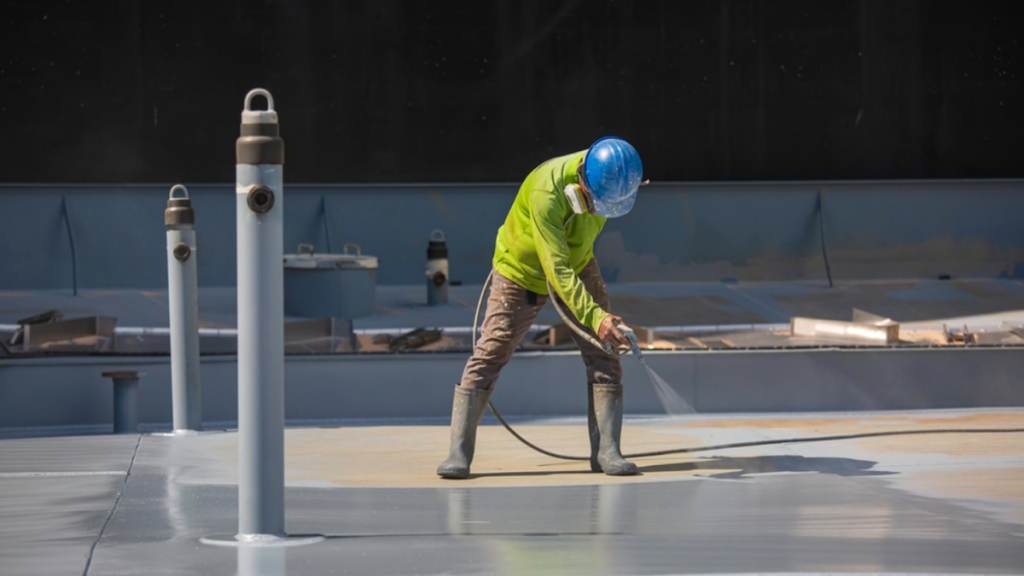Industrial painting, restoration painting, and protective coatings are important services that help to maintain and improve the appearance, function, and value of various industrial and commercial structures. From warehouses and factories to bridges and tankers, these services can help to protect and preserve a wide range of assets and investments. In this article, we will explore the various benefits of industrial painting, restoration painting, and protective coatings, as well as some key considerations for choosing the right service provider.
Industrial painting refers to the process of applying paint or other finishes to the surfaces of industrial structures and equipment. This type of painting is typically performed by professional contractors who specialize in working with large-scale projects and equipment. Industrial painting is often necessary for a number of reasons, including:
- Improving the appearance of industrial structures: Industrial painting can help to improve the visual appeal of industrial buildings and equipment. By updating the colors and finishes of these structures, companies can enhance their brand image and make their facilities more attractive to customers and employees.
- Protecting against weathering and corrosion: Industrial structures and equipment are often exposed to harsh weather conditions and other environmental factors that can cause wear and tear over time. Industrial painting can help to protect these structures from the elements, as well as from corrosion and other forms of damage.
- Maintaining and extending the life of industrial assets: Industrial painting can help to extend the life of industrial structures and equipment by protecting them from damage and wear. By regularly maintaining and painting these assets, companies can save money on repairs and replacements in the long run.
Restoration painting refers to the process of repairing and repainting surfaces that have been damaged or worn over time. This type of painting is often necessary for historic or antique structures, as well as for newer buildings and equipment that have suffered from wear and tear. Restoration painting can be a complex and time-consuming process, but it can provide a number of benefits, including:
- Preserving the historical integrity of structures: Restoration painting can help to preserve the original character and appearance of historic structures, such as churches, museums, and landmarks. By carefully repairing and repainting these structures, contractors can help to maintain their cultural and historical significance.
- Improving the appearance and value of older structures: Restoration painting can help to improve the appearance and value of older structures that have become faded or worn over time. By updating the colours and finishes of these structures, property owners can enhance their appearance and increase their value.
- Extending the life of older structures: Restoration painting can help to extend the life of older structures by repairing and protecting surfaces that have been damaged or worn. By investing in restoration painting, property owners can save money on repairs and replacements in the long run.
Protective coatings are specialized paints and finishes that are applied to industrial structures and equipment to protect against various forms of damage. Protective coatings can be applied to a wide range of surfaces, including metal, concrete, wood, and plastic. Some common types of protective coatings include:
- Anti-corrosion coatings: These coatings are designed to protect against corrosion, which is a common problem for metal structures and equipment that are exposed to harsh weather conditions and other environmental factors. Anti-corrosion coatings can help to extend the life of these assets and prevent costly repairs and replacements.
- Chemical-resistant coatings: These coatings are designed to protect against chemical spills and other forms of chemical damage. They are often used in industries such as petrochemical, pharmaceutical, and food processing, where chemicals are commonly used.
- Thermal insulation coatings: These coatings are designed to insulate surfaces from extreme heat or cold.
When choosing a service provider for industrial painting, restoration painting, or protective coatings, it is important to consider a number of key factors. Some things to consider include:
- Experience and expertise: Choose a service provider with a proven track record of success in the field. Look for contractors who have experience working with similar projects and materials and ask for references and case studies to learn more about their work.
- Quality of materials: Make sure the service provider uses high-quality paints and finishes that are specifically designed for industrial and commercial applications. Cheap or low-quality materials may not provide the same level of protection and durability.
- Safety and compliance: Choose a service provider that follows all relevant safety regulations and guidelines and has a proven track record of compliance. This is especially important for industrial and commercial projects, where the risks of accidents and injuries may be higher.
- Pricing and value: Consider the overall value of the service rather than just the cost. Look for contractors who offer competitive pricing but also take the time to understand your needs and provide customised solutions.
Overall, industrial painting, restoration painting, and protective coatings are important services that can help to maintain and improve the appearance, function, and value of various industrial and commercial structures. By choosing the right service provider and investing in these services, companies and property owners can save money and protect their assets in the long run.




